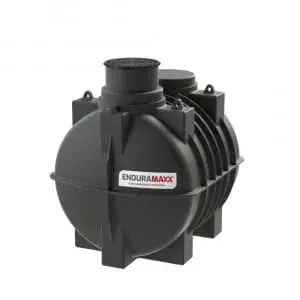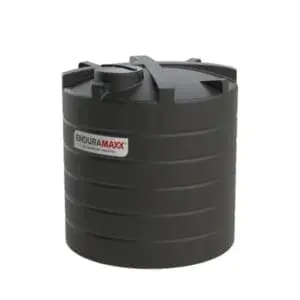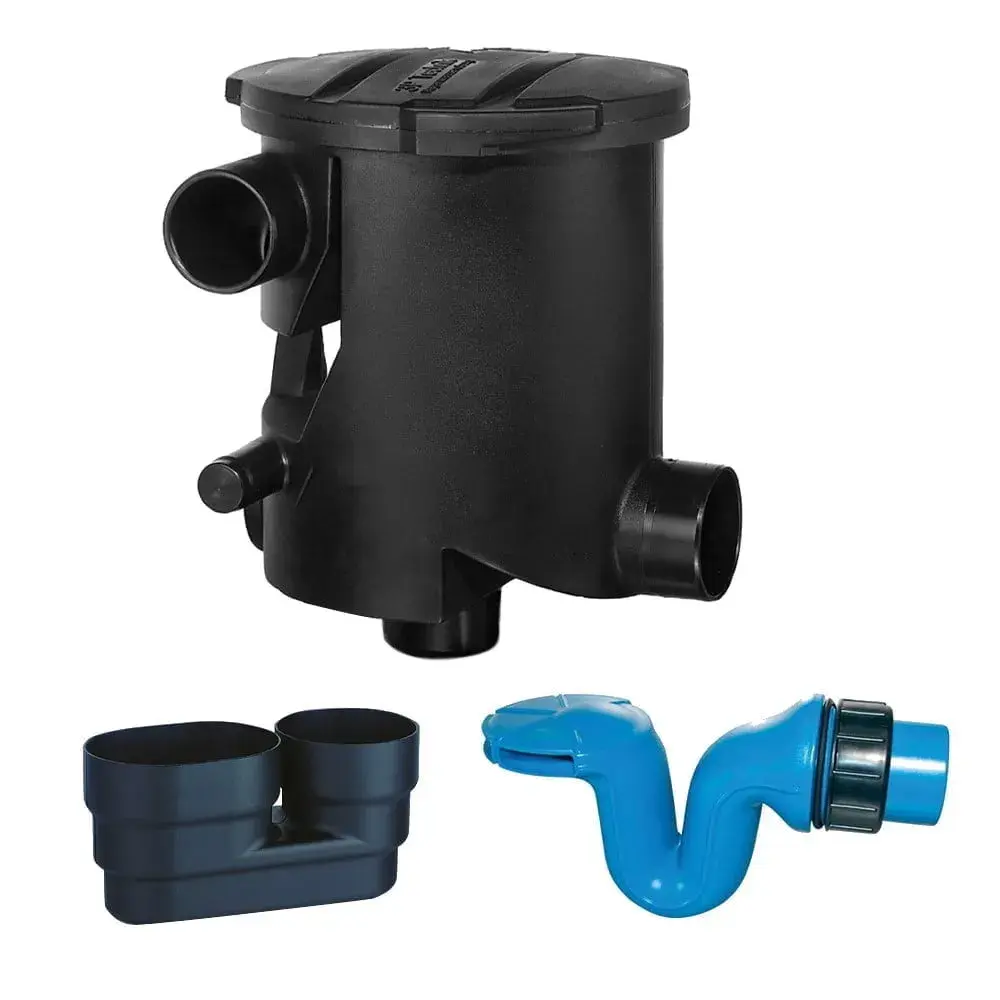Reverse osmosis is a fine filtering process used in many industries to produce clean water free from micro-organisms, harmful chemicals, and dissolved particulates. In this article, we look at how the process works and its applications, and also the tanks and storage solutions required.
What is reverse osmosis?
Osmosis is the passage of a liquid through a semi-permeable membrane from the most dilute solution to the more concentrated solution. Nature tries to equal up and come into balance.
Reverse osmosis is where is reversed by applying pressure to the more concentrated liquid. If this hydraulic pressure exerted on the semi-permeable membrane exceeds the natural osmotic pressure, then reverse osmosis takes place, and the more concentrated liquid is made even more concentrated by the loss of water molecules. The fluids pass through, but the dissolved solids remain behind.
This keeps the solute on one side of the membrane and produces a pure demineralised distillate on the other side – this is called the “permeate”. Contaminants of up to 0.001 microns in diameter can be excluded. This demineralization of water is essential for certain industrial processers.
When two liquid columns with different concentrations are separated by a semi-permeable membrane, the fluid will flow through to equalise the concentrations. The dissolved solid parts will remain behind. Once the solutions have equalised themselves, it can be seen that one column is now higher than the other columns – and this height difference is the osmotic pressure.
Where industry needs demineralised water, this form of fine filtration can be an effective way to get it. The membrane can be specific to the task required – different chemical affinities of the different membranes allow the desired molecules passage.
Reverse osmosis can occur as the first stage in the treatment, or the finishing stage, whichever is most suitable.
How does ion exchange resin work?
Ion exchange is an interchange of charged particles (or ions). Ions present on an insoluble resin can change places with ions in a solution in contact with the resin. A strong acid cation in the resin with hydrogen converts dissolved salts into their corresponding acids, and a strong base anion resin as a hydroxy removes these acids.
Industrial applications for reverse osmosis
Industrial processes commonly require the removal of contaminants, and reverse osmosis removes not only microbial and biological contaminants but also chemical ones. Because the semi-permeable membrane can be fitted to the job at hand, there is a wide range of uses for reverse osmosis in the industry. Here are some of them:
Mains water purification
Reverse osmosis can be used for the treatment of both commercial and domestic mains water supplies. In addition:
- The food industry demands high-quality water.
- Pharmaceutical and chemical industries - contamination could be catastrophic.
Power generation needs steam. Steam needs boilers and boilers need demineralized water to prevent the build-up of scale and produce high-quality steam.
Seawater desalination
Water with high salinity (30,000 mg/l) may be the only source of water for many people. Cruise ships, maritime transport, oil rigs may depend on seawater and machinery corroded by water with high salt content. Reverse osmosis with specialised membranes is employed to reduce the salinity and remove contamination with microbes and chemicals.
Desalination of Brackish Water
Water, a mix of seawater and freshwater, is termed brackish with a salt content of 1000 to 15, 000 mg/l. Potable water should have a salinity of less than 500 mg/l, so reverse osmosis is used for brackish water.
The treatment of wastewater
Reverse osmosis is usually used as the final stage of wastewater treatment. It reduces any remaining impurities dissolved in the water as well as any bacteria and chemicals still present. The clean water can be reused, and the residue safety disposed of.
It is part of the tertiary treatment of industrial wastewater before it is disposed of. Industrial greywater and blackwater are commonly treated by reverse osmosis. The type of wastewater will determine the type of storage needed. Sometimes, the wastewater may be especially toxic or corroding, and storage tanks must be of a quality to safely deal with them – this might require the use of bunded tanks where the product is potentially dangerous.
Industrial boilers:
Hard water is a problem for industrial boilers – it causes scaling, furring up of the pipes, inefficient heat transfer and more time is needed for servicing and cleaning them. They also do not last as long. For this reason, boilers need soft water – and reverse osmosis can remove the calcium and magnesium molecules responsible for the hardness of the water.
Industries such as chemical, pharmaceutical, and pulp/lumber use reverse osmosis to treat the incoming water to their boilers.
Clean rinsing
Many industries need a spot-free rinse for their equipment and vehicles. Hard water causes scaling, even bleaching to some surfaces – so reverse osmosis avoids these problems by eliminating the calcium and magnesium salts in the solution.
The automotive industry
Reverse osmosis is an important part of the car manufacturing industry. Reverse osmosis may be used in the initial stages where clean water is important and at the end of the process. Car manufacturing produces wastewater that contains oils, metals, chemicals that might be harmful and disposed of safely. Using reverse osmosis, clean water can be recycled, and the residue might also be reused or disposed of correctly. The effluent must comply with the regulations.
The food and drink industry
The food and drinks industry are highly regulated to ensure our safety and reverse osmosis is a key part of enduring that the production is carried out to the highest standards. It prevents the spread of micro-organisms that could contaminate our food, eliminates unpleasant tasting chemicals and sterilizes equipment. Clean water helps to maintain hygiene at all stages of food and drink production.
In the dairy industry, reverse osmosis is used to separate whey from water, and in the maple syrup industry, it is used to remove water from the sap.
Agricultural industry
Agriculture is a major water user, but there are times when the water needs treating before use. The salinity of the water is of concern because salt affects the quality of the soil. Reverse osmosis removes this. It also removes other harmful contaminants such as boron, which are not uncommon in many groundwater sources.
Advantages & disadvantages of reverse osmosis.
Why not just use water softeners? Reverse osmosis acts as a filtration system at a fine level of filtration. Water softeners add chemicals to neutralise the hard water elements such as calcium and magnesium.
Water quality
Reverse osmosis removes other contaminants which softeners do not. The total dissolved solids may include nitrates, sulphates, iron, and manganese, as well as sodium, chlorides, and carbonates.
Taste
Softeners remove the calcium and magnesium – but they do not remove other contaminants such as manganese, iron and nitrates, giving the water an unpleasant taste. Treatment with softeners alone does not give the recommended quality needed for potable water. Reverse osmosis can eliminate 95-99% of inorganic and organic pollutants.
Is reverse osmosis suitable for home use?
Quite apart from the taste, reverse osmosis is unsuitable for homes since it removes essential minerals and leaves the water acidic. Over the years, this may reduce the body's immunity and thus the ability to fight off disease – and acidic water might predispose to degenerative disease.
Acidity is also implicated in kidney disease and gastrointestinal problems.
Environmental considerations
The initial installation of a reverse osmosis system is designed to be energy-efficient, thus reducing operating costs and reduces the need for hazardous chemicals.
But during the purification, one gallon of purified water takes twenty gallons of water to produce. This needs to be recycled if possible.
Efficiency
Installing a reverse-osmosis system can be expensive, and there is a limit to their capacity.
Maintenance
Reverse osmosis filters need periodic changes – but this is easy to do and only takes a few hours of downtime. The membranes need replacing every 2-3 years, depending on the amount and type of treated fluids.
Why containerised reverse osmosis systems are used.
There are situations where reverse osmosis inside a container is required:
Mobility
Reverse osmosis inside a container means it can be transported – and the process can carry on during the journey so that on arrival at the destination, the water is already demineralised. This is especially useful when the destination is some way from the origin.
Protection
When the reverse osmosis plant is inside a container, it is protected from contamination from the atmosphere. It also means that other protective covers are superfluous. It also protects the system from any unwelcome tampering– the control is in the hands of specific, trained, and trained personnel.
Relocation
Once in a container, the osmosis plant is mobile. This means it can be used where and when necessary. It is easy to move around and can be used for short or longer periods according to need.
Reassembly costs
Since the reverse osmosis plant is already assembled inside the container, it will not require time or money to reassemble it.
Type of container
The container can be adjusted to your needs. They come in different sizes (standard ISO sizes of 10’’ 15’’ and 20’’. They can be fitted with heat pump cooling or heating, ventilation, lighting, wall insulation as well as pre-treatment filtration.
Ready to use
The contained plant will already have been thoroughly tested and is ready to use. Before acquiring the unit, you must ensure that it is fit for the purpose you need it for. You need to be aware of access requirements – and you also need to be aware of regulations about it.
Enduramaxx Water Tanks for Reverse Osmosis Systems
Enduramaxx can offer a range of plastic tanks designed for reverse osmosis systems. Our tanks are rationally moulded, which means they have no seams and smooth inner surfaces, making cleaning them easy. The high-quality plastic material is long-lasting and tough and UV stabilised.
We have many reverse osmosis water tanks, including conical permeate tanks and bunded tanks for toxic fluids. We can supply all the fittings, valves, and filters you need to make your system the right one for you. You can view our range of tanks suitable for reverse osmosis here.
Our experts are ready to discuss your specific needs if you give us a ring on 01778 562810.
Posts By Topics
- Blog (303)
- Chemical Storage Tanks (118)
- Chemical Dosing Tanks (114)
- Chemical Tanks (114)
- Water Tanks (58)
- Rainwater Harvesting Tanks (43)
- Vertical Rainwater Tanks (31)
- Vertical Storage Tanks (31)
- Cone Bottom Tanks (19)
- Conical Cone Tanks (18)
- Rainwater Harvesting (17)
- Water Bowsers (15)
- Horizontal Tanks (14)
- Potable Water Tanks (13)
- Farming (9)
- Case Studies (8)
- Industrial Storage Tanks (7)
- Liquid Fertilser Storage Tanks (6)
- WRAS Approved Potable Tanks (6)
- Wine and Beer Production (6)
- Horizontal Transport Tanks (5)
- Microbrewery (5)
- Rainwater (5)
- Category 5 Break Tanks (4)
- Cider Production (4)
- Mixer Tanks (4)
- Molasses Tanks (4)
- Polyethylene tanks (4)
- Rainwater Filter Kits (4)
- SPECIALIST & BESPOKE TANKS (4)
- Bunded Tanks (3)
- Slimline Tanks (3)
- WRAS Approved (3)
- Clarification Tanks (2)
- Crosslinked Polymer Tanks (XLPE) (2)
- Fertiliser Tanks (2)
- Sump Tanks (2)
- Tank Installation (2)
- Water Butt (2)
- underground water tanks (2)
- ACCESSORIES & FITTINGS (1)
- ATV & UTV SPRAYING UNITS (1)
- Above Ground Effluent Tanks (1)
- Bespoke Tank Frames (1)
- Category 5 Turret (1)
- Caustic Soda Tanks (1)
- Closed Top Bunded Tanks (1)
- Craft beer (1)
- Effluent Tanks (1)
- Enduramaxx (1)
- Ferric Chloride Tanks (1)
- Fire Safety Regulations (1)
- Fire Sprinkler Water Storage Tanks (1)
- Industrial Water Tank (1)
- Open Top Bunded Tanks (1)
- Open Top Cone Tanks (1)
- Open Top Vertical Tanks (1)
- Polyethylene Potable Water Tanks (1)
- Polyvinylidene Fluoride (PVDF) Tanks (1)
- Polyvinylidene Fluoride Tanks (PVDF) (1)
- Pressure Washers (1)
- Pro Series Spot Sprayers (1)
- RWH (1)
- Sodium Hydroxide Storage Tanks (1)
- Sprayer Fill-up Tanks (1)
- Uncategorised (1)
- liquid fertiliser tank (1)
Sign up to the newsletter
enduramaxx.marketing
Related Posts
Film Props UK, Why Use Water Tanks?
Film Props UK often require lateral thinking for water and effects and often look at plastic water...
Primary Settlement Tanks In Water Treatment: Why Are They Used?
Clarification or primary settlement tanks are used for a wide variety of applications in the...
Plastic Water Tanks For Fish: Why Buy Plastic Tanks
Enduramaxx plastic water tanks for fish are available up to 25,000 litres as circular water tanks....
Related Products
From £1,080.00 inc. VAT
£900.00 exc. VAT
From £1,344.00 inc. VAT
£1,120.00 exc. VAT
From £768.00 inc. VAT
£640.00 exc. VAT
£480.00 inc. VAT
£400.00 exc. VAT





